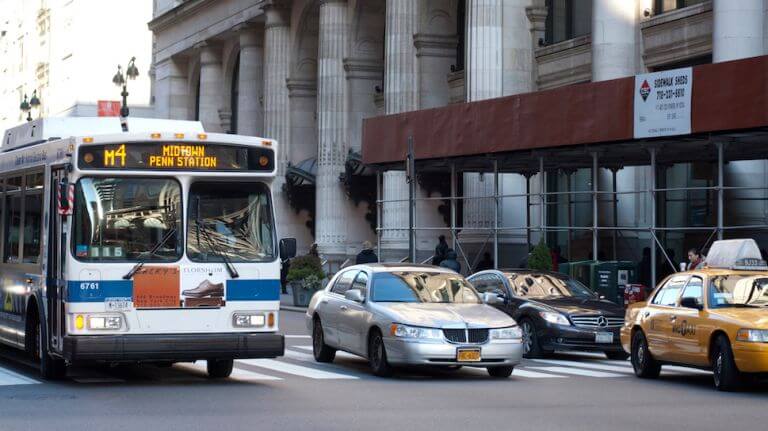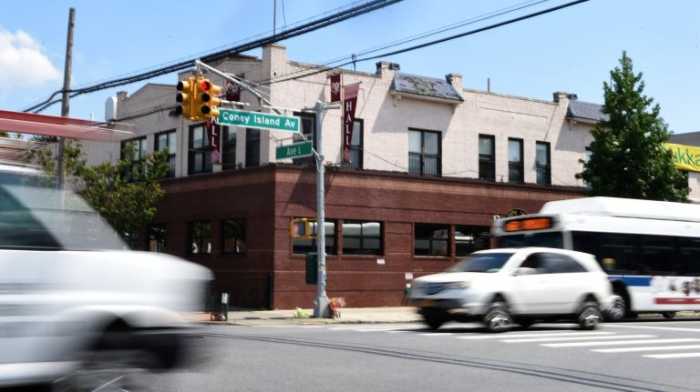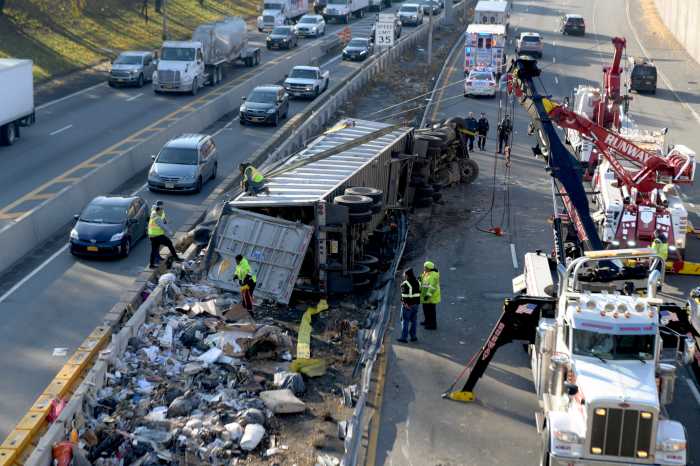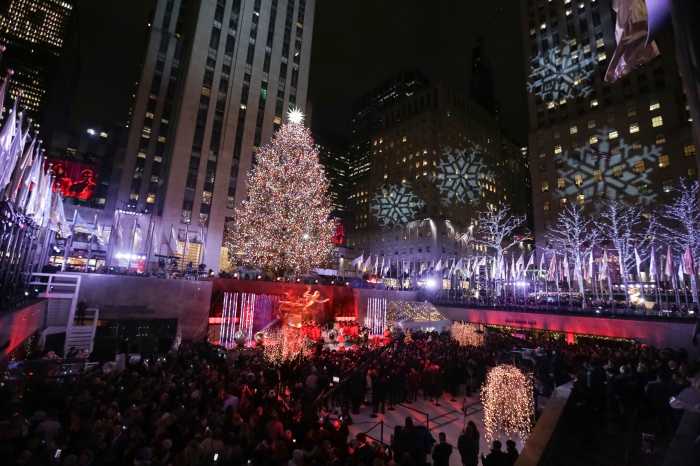It’s tough at the curb. Everyone wants to be there.
Congested and contested curb lanes are detrimental to auto-users, pedestrians, bikers, transit riders, taxis, delivery and pick-up vehicles, outdoor diners, and businesses that are part of our street ecosystem. The lack of immediate space gives rise to double parking and other unsafe conditions, and excessive traffic due to parking searches.
Impeded access to the curb translates to impeded access to libraries, restaurants, doctor’s offices, businesses, homes, and everything else.
We need to care about the curb, especially in the busiest parts of New York City, where the greatest conflicts arise.
The curb is a finite resource that accommodates myriad uses and users. Traditionally it has been used for parking cars and commercial loading zones, occasionally for turning cars, and eventually for bus lanes. Increasingly, as the desire for safer streets and the need to address climate concerns have become priorities, New York has reimagined the curb lane as bike lanes –in which case parking spaces are moved over into the street–and the idea of using curb space for rain gardens and bioswales has taken hold. During the COVID pandemic, the streets were re-invented once again to accommodate social distancing and outdoor dining. Outdoor dining is here to stay. Given our density, NYC has the lowest space-per-car ratio of any U.S. city.
A 2017 study found that NYC drivers spend approximately 107 hours per year searching for parking spots, wasting $2,243 on time, fuel, and emissions. In a city with the most comprehensive transit system in the country, we can do more to give everyone efficient time at the curb.
If we want our streets to feel safe and manageable for all New Yorkers, if we want our streets to function well, we need thoughtful infrastructure. We need incentives to increase parking availability in commercial districts and other high-demand areas. We need the NYC Department of Transportation to improve its creativity and develop new ways to make the curbs work for all New Yorkers.
Pricing is a very successful tool for increasing the turnover of parking spaces by encouraging shorter stays. Shorter parking durations turn spaces over faster and enable more people to use the curb to access their destinations. When rates have been increased, the average length of stay decreased. It’s a no-brainer.
Generally, there is a good structure in place for parking pricing, but the base rate is too low and needs to be adjusted to continue improving turnover and keep pace with the changing nature of curb use in the city.
Instead, NYC has not rethought its base meter prices since 2018. Since then, demands on the curb have radically changed, the price of just about everything has gone up, and New York’s meter prices are too low to have much of an effect on curb management. Half of our meters are cheaper than the standard meter rates in Boston, Chicago, Washington, DC, San Francisco, and many other cities. In one of the most expensive housing markets in the U.S., we let you house your car for a bargain. A privilege that accrues to less than half of our residents because only 45% of New York households own cars.
By setting the right price, DOT can rationalize the curb. People who want to run a quick errand can park in front, and people who want to stroll the neighborhood can find a place to park in a lower-demand part of the district or take transit instead. The more people come and go –and let’s not forget, most of them walked or used transit, to begin with–the more sales and contacts local businesses have throughout the day.
Curb management is a common sense, necessary step towards optimizing our limited curb space.
Regional Plan Association recently published a Parking and Curb Management Toolkit for Business Improvement Districts and Re-Envisioning the Right-of-Way, a comprehensive report that pushes the envelope on how we think about making streets for people.
We must leverage increased parking availability and reduce congestion in commercial districts, other high-demand areas, and throughout the city; the best way to go is to price meters high enough to ensure available parking.
The curb is a space we all need to use. Let’s make it more accessible.
Rachel Weinberger is Director, Research Strategy & Peter W. Herman Chair for Transportation at Regional Plan Association.






































